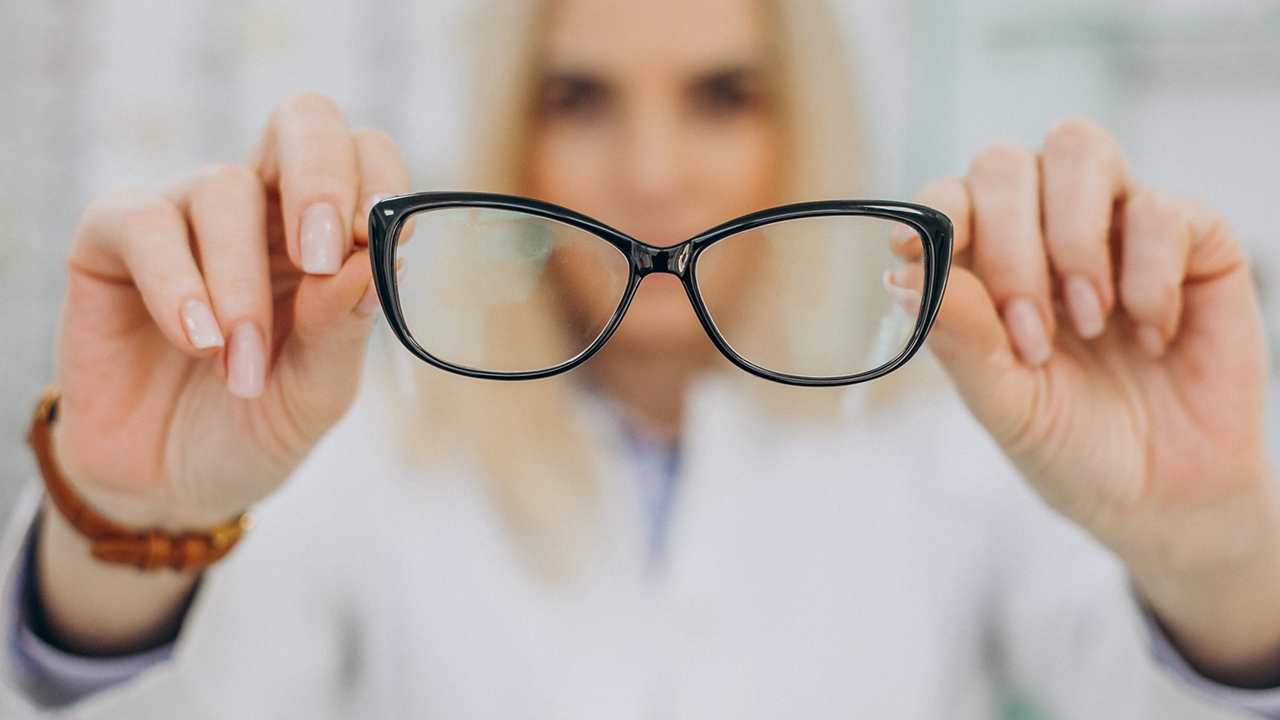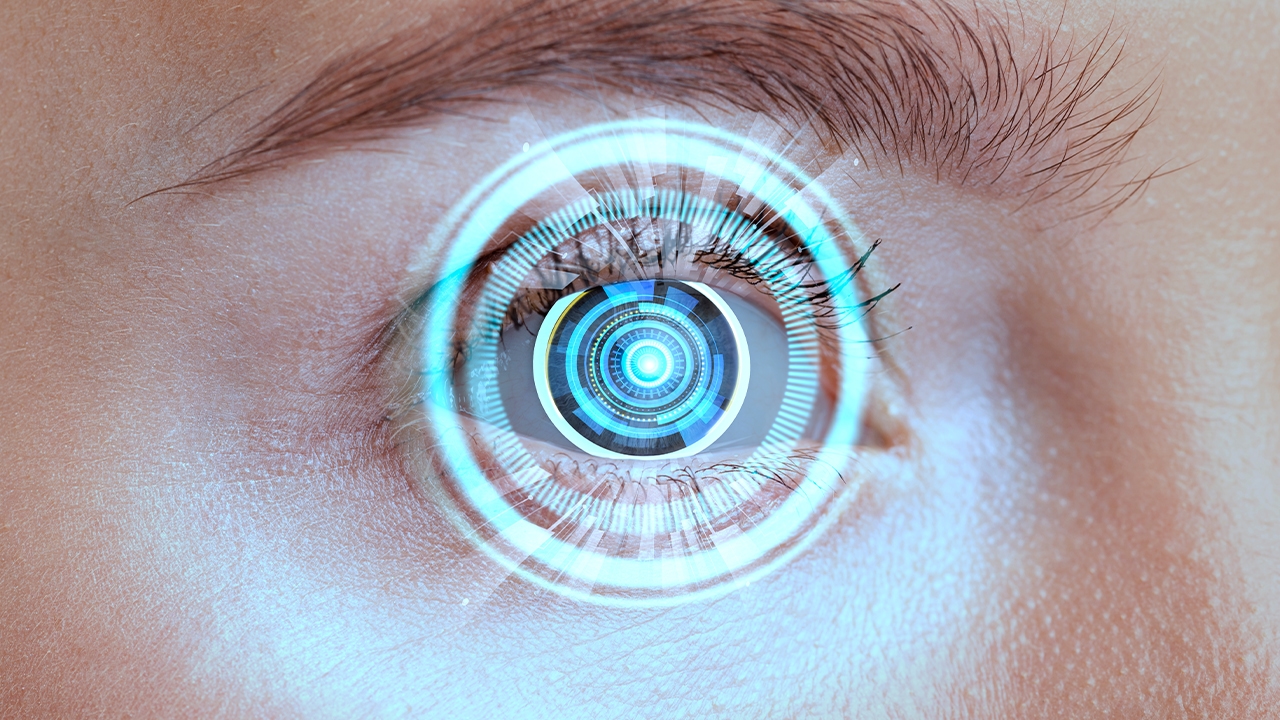Astigmatism is a refractive error that occurs when the cornea or lens of the eye is not properly curved. This prevents light from focusing on a single point on the retina. This causes the image to appear blurry, distorted or shadowy. It is usually present at birth, but can also develop as a result of eye trauma, surgery or corneal diseases. Astigmatism is often seen together with myopia or hyperopia and can affect both near and far vision.
The symptoms of astigmatism are: headache, eye fatigue, blurred vision, difficulty focusing, night vision problems and eye rubbing. It can be easily diagnosed with regular eye examinations. It can be treated with glasses, toric contact lenses or laser eye surgery. Laser treatments include methods such as LASIK, PRK and SMILE. These methods offer permanent solutions in people with suitable eye structure. The treatment method should be determined according to the patient’s eye structure, age and lifestyle. Astigmatism treatment increases the quality of vision with correct planning and significantly improves life comfort.
İçindekiler
Toggle
What is Astigmatism?
Astigmatism is a refractive error that occurs when the cornea or lens of the eye is not properly curved. Normally, the cornea and lens refract light equally as it enters the eye and directs it to a single focal point. However, in the case of astigmatism, these surfaces are irregular. Light does not gather at a single point on the retina. Instead, it focuses on multiple points. This causes the image to be perceived as blurry, distorted or shadowy.
Astigmatism can often be seen together with myopia (near-sightedness) or hyperopia (near-sightedness). This deformity in the eye is usually congenital. However, it can progress with age. It can also occur after eye traumas.
Astigmatism can affect both near and far vision. In its treatment, methods such as glasses, contact lenses or, in suitable patients, laser eye surgery are usually preferred.
What Causes Astigmatism?
The answer to the question of what causes astigmatism is mostly based on structural disorders of the cornea located in the front of the eye or the lens in the eye. The eye should refract the incoming light properly and focus it right on the retina. However, in astigmatism, this refraction process is not smooth. The reason for this is that the cornea or lens deviates from its round shape. The cornea or lens has taken an oval shape. This causes the light to fall on more than one point. This causes the image to appear blurry, shadowy or distorted.
Main Causes of Astigmatism:
Genetic predisposition: Astigmatism is mostly congenital. Having this eye defect in the family increases the risk of astigmatism.
Corneal traumas: Cutting or piercing injuries to the eye can damage the corneal structure and cause astigmatism.
Keratoconus: This progressive disease, in which the cornea thins and takes the shape of a cone, creates a severe form of astigmatism.
Deformity after eye surgeries: Irregular healing, especially after sutured cataract surgeries or corneal surgeries, can lead to the development of astigmatism.
Eyelid pressure or rubbing habit: Long-term and continuous eye rubbing can also cause the cornea to deform over time.
The answers to the question of what causes astigmatism may rarely include age-related changes or hormonal effects. However, the real determining factor is the smoothness of the corneal and lens surfaces.
What are the Types of Astigmatism?
Astigmatism types are classified according to the way the refractive error in the eye occurs and whether it is seen together with other visual impairments. Each type can cause different levels of visual impairment and require different treatment approaches. In general, astigmatism is associated with the focusing of light to a regular point on the retina; however, the direction, location and degree of this impairment may vary.
Myopic Astigmatism (Myopic Astigmatism)
This is a type of astigmatism in which myopia (inability to see clearly far away) also occurs together with astigmatism. While one axis in the eye shows myopic focus, the other axis is normal or less myopic. The patient sees distant objects blurry, especially.
Hypermetropic Astigmatism (Hypermetropic Astigmatism)
In this type, hypermetropia (inability to see near objects clearly) is present together with astigmatism. Light focuses behind the retina. The person has difficulty seeing close distances and eye fatigue is common.
Mixed Astigmatism (Mixed Astigmatism)
One axis of the eye is myopic and the other axis is hypermetropic. In other words, some of the light focuses in front of the retina and the other behind it. This is usually the type of astigmatism with the lowest visual quality. There is blurring in both near and far vision.
Other Structural Astigmatism Classifications:
Regular Astigmatism
The corneal curvature is symmetrical but elliptical, not round. It is usually congenital and can be easily corrected with glasses or contact lenses.
Irregular Astigmatism
The corneal curvature is both unsymmetrical and distorted in different directions. It usually occurs after corneal traumas, keratoconus or previous eye surgeries. It may not be fully corrected with glasses; special hard contact lenses or laser treatment may be required.
How Does Astigmatism See?
Although the answer to the question of how astigmatism sees varies from person to person, there are generally common symptoms. Astigmatic patients may see objects distorted, double or blurry. When glasses or lenses are not used, the image is distorted and clarity is lost.
In addition, the following complaints are common:
Headache and eye fatigue
Burning and redness in the eyes
Difficulty in dim light
Difficulty in focusing
These distortions in visual perception can cause a decrease in performance in people’s social and professional lives.
Astigmatism Symptoms
Astigmatism symptoms usually manifest themselves with complaints that develop slowly and affect daily life over time. Astigmatism is a refractive error in the eye and causes a clear image to be obtained as a result of the light not being able to focus correctly on the retina. This can cause problems in both near and far vision. Astigmatism symptoms vary from person to person. These symptoms depend on the degree of astigmatism and other vision problems. For example, if you have myopia or hyperopia, the symptoms

How to Prevent Astigmatism?
By paying attention to certain environmental and lifestyle factors, the progression of astigmatism can be slowed down or secondary astigmatism formation can be prevented.
Astigmatism begins with a genetic disorder in the curvature structure of the cornea. Although this structural condition is permanent, it can become more pronounced with environmental factors or progress with various external factors. Therefore, it is important to take precautions to protect eye health. This reduces the effects of astigmatism and prevents other eye problems.
Precautions That Can Be Taken to Prevent Astigmatism or Slow Its Progression:
Avoid eye trauma: Impacts and accidents that can disrupt the corneal structure can cause subsequent astigmatism. Using protective glasses while doing sports is very important in this regard.
Give up the habit of rubbing your eyes: Constant and forceful rubbing of your eyes can negatively affect the corneal structure. This behavior should be monitored carefully, especially in children.
Maintain the correct distance from the screen: Prolonged use of computers or phones causes eye fatigue. Resting your eyes at regular intervals can reduce the visual impairments that occur with astigmatism.
Work in sufficient and appropriate light: Activities such as reading and writing in dark or dim environments can strain your eyes and cause complaints such as headaches and eye strain.
Do not neglect eye check-ups: Regular visits to the eye doctor from an early age are very important in terms of monitoring the progression of astigmatism and intervening in a timely manner.
Pay attention to eye hygiene: Especially in contact lens users, failure to follow hygiene rules can lead to infection and deformity in the cornea. This can lead to astigmatism developing later on.
Diagnosis of Astigmatism
Astigmatism is diagnosed through a detailed eye examination by an eye doctor. This diagnosis includes various tests performed to determine the type and degree of refractive error in the eye. Astigmatism can usually be present from childhood, but the symptoms become noticeable over time. Therefore, regular eye check-ups are very important in the early detection of astigmatism. The methods used to diagnose astigmatism are as follows:
Visual Acuity Test (Snellen Test)
This test, which is applied during a standard eye examination, uses a table of letters (Snellen chart). The patient is asked to read letters of different sizes with one eye closed. The letters appearing blurry or distorted may raise suspicion of astigmatism.
Autorefractometer Measurement
This computerized device automatically measures the way the eye refracts light. It provides information about the focusing ability of the cornea and lens. It provides initial data about the presence and degree of astigmatism.
Subjective Refraction Test
In this test, which is applied with the classic questions of “clearer or blurrier?” where eyeglass lenses are tried, the doctor determines the diopter that provides the best vision by using lenses with different numbers.
Keratometry (Corneal Curvature Measurement)
In this test, the curvature of the cornea in the horizontal and vertical planes is measured. If these curvatures are not equal, it indicates the presence of astigmatism. It helps distinguish between regular and irregular astigmatism types.
Cornea Topography
It is an advanced imaging method that maps the corneal surface. The shape, degree and location of astigmatism are analyzed in detail. This test is especially important before laser surgery.
Astigmatism Test
Astigmatism testing is often a routine practice when preparing eyeglass prescriptions. However, test cards consisting of special drawings can also be used for astigmatism testing.
In these tests, the person is shown various lines and geometric shapes. If the lines are not seen with equal clarity, astigmatism is suspected. Especially in children, tests performed at an early age are very important in terms of preventing future eye problems.
Astigmatism Treatment
Astigmatism treatment is planned specifically for the person. This process is shaped according to the degree of astigmatism and other vision problems. In addition, the person’s lifestyle is also taken into account. Astigmatism is a refractive error in the eye. This condition prevents light from focusing on a single point on the retina. As a result, it causes blurry or distorted vision. This can affect the quality of vision at both near and far distances. The aim of the treatment is to obtain a clear image by regulating the angle of entry of light into the eye and the way it is refracted.
One of the most frequently used methods is glasses. Astigmatism glasses are designed with cylindrical lenses that balance the curvature difference in the cornea. It is a very effective solution for mild and moderate astigmatism cases. Glasses are preferred especially in children and people diagnosed with astigmatism for the first time. Regular use of glasses both reduces complaints such as headaches and eye fatigue and increases visual clarity.
Contact lenses are another option that can be preferred instead of glasses. Specially designed contact lenses called toric lenses are used in the treatment of astigmatism. These lenses provide clear vision by directly correcting the irregularity in the cornea. The suitability of the lens to the person’s eye structure should be carefully evaluated during lens selection. Hard lenses can be preferred in more advanced or irregular astigmatism cases. In cases such as keratoconus, vision quality can be improved by using special lenses.
Laser eye surgery options offer an important alternative for patients looking for a permanent solution in the treatment of astigmatism. Astigmatism is corrected by reshaping the corneal surface with laser methods such as LASIK, PRK and SMILE. These surgeries are usually performed on people who are over the age of 18, whose eye number has not changed in the last year and whose corneal thickness is appropriate. The suitability of eye surgery is determined by a detailed preliminary examination and tests. Most astigmatism patients treated with laser do not need to use glasses or lenses in their daily lives.
Each treatment method should be evaluated according to the person’s lifestyle, profession, eye structure and expectations. The answer to the question of how to treat astigmatism may be different for each patient. Therefore, it is very important to consult an ophthalmologist for the right treatment plan. With early diagnosis and correct intervention, vision defects caused by astigmatism can be controlled and quality of life can be significantly improved.

Eye Laser Surgery for Astigmatism Treatment
Eye laser surgery for astigmatism treatment is a successful method for patients looking for a permanent and effective solution. Astigmatism is a refractive error that occurs when the cornea or lens in the eye is not properly curved. This prevents light from being distributed evenly on the retina, causing vision to be blurry, distorted or shadowy. Laser eye surgery corrects this defective surface, allows the light to focus correctly and helps to achieve clear vision.
Eye laser surgeries are usually performed on individuals who are over 18 years old, whose eye number has remained stable in the last year and whose corneal thickness is sufficient. A detailed eye examination performed before the surgery is very important in determining whether the person is suitable for laser surgery. The general condition of the eye is evaluated with a series of tests such as corneal topography, eye dryness test, and pupil diameter measurement.
The most commonly used methods in laser astigmatism treatment include LASIK, PRK and SMILE. LASIK is based on the principle of removing a thin flap from the upper layer of the cornea and shaping the lower layer with a laser. It provides quick recovery and is painless. The PRK method, on the other hand, involves completely peeling off the surface layer of the cornea and reshaping the underlying tissue with a laser. This method is preferred in people with thin corneas, but the recovery process is a bit longer. The SMILE method is a newer technology and corrects the refractive error by removing tissue from the inside of the cornea in a minimally invasive manner. The risk of dry eyes is lower and the recovery process is fast.
Laser astigmatism treatment can largely eliminate the need for patients to use glasses or contact lenses. The application is usually performed on both eyes on the same day and the procedure takes less than 10 minutes per eye. The patient can return to their daily lives within a few hours after the surgery. The quality of vision improves significantly within a few days, and full recovery can take up to a few weeks.
Not every eye structure is suitable for laser treatment. Therefore, people considering laser surgery for astigmatism treatment should first undergo a detailed eye examination. In addition, conditions such as diabetes, corneal diseases or severe dry eyes may constitute an obstacle to laser surgery. It is very important to create a personalized treatment plan by considering all these criteria.
Eye laser surgery for astigmatism treatment is a safe and comfortable solution with high success rates when combined with the right patient selection and advanced technology. It significantly increases the quality of life of patients by largely eliminating visual defects after treatment.
Frequently Asked Questions About Astigmatism
Does astigmatism go away completely?
Since astigmatism is a refractive error, it can be controlled with glasses, contact lenses or laser treatment. It can be corrected with glasses and lenses; however, it is usually possible to get rid of it permanently with laser eye surgery. Since congenital astigmatism is structural, it does not go away on its own.
Does astigmatism progress?
The degree of astigmatism may increase over time. This increase may become more pronounced especially in progressive corneal diseases such as keratoconus or after eye traumas. Progress should be monitored with regular eye examinations and the treatment plan should be updated if necessary.
Can astigmatism be corrected with lenses?
Yes, specially produced toric contact lenses are an effective solution in the treatment of astigmatism. These lenses balance the irregular curvature of the cornea and provide clear vision. The appropriate lens type is determined according to the eye structure and the degree of astigmatism.
What happens if astigmatism glasses are not used?
When astigmatism is not corrected with glasses, complaints such as headache, eye fatigue, difficulty focusing and decrease in vision quality may increase. It can negatively affect school success and visual development, especially in children. Therefore, it is very important to treat it.
Is astigmatism congenital or does it develop later?
Astigmatism is mostly congenital, but it can also develop later due to eye traumas, surgeries or diseases such as keratoconus. Especially habits such as frequently rubbing the eyes can also trigger this condition.
Can astigmatism be treated with laser?
Yes. Laser eye surgeries such as LASIK, PRK and SMILE can permanently treat astigmatism in individuals with suitable eye structures. With these methods, the cornea is reshaped and light is focused properly on the retina.
Is astigmatism treatment painful?
Glasses and contact lens treatments are painless. Laser surgeries are also performed with local anesthesia and no pain is felt during the procedure. There may be temporary complaints such as slight stinging or watering after the surgery.
Can astigmatism occur in one eye?
Yes, astigmatism can sometimes be seen in only one eye. However, it mostly affects both eyes and can be at different degrees.